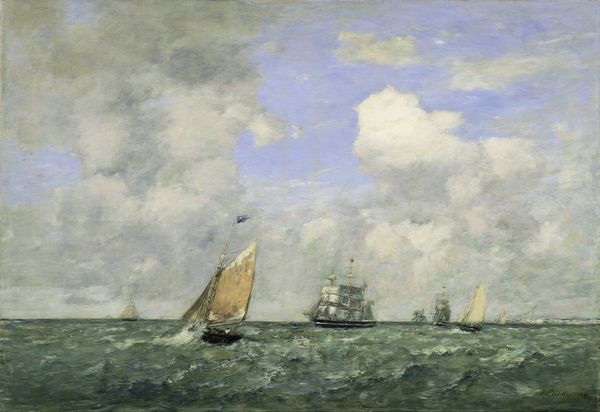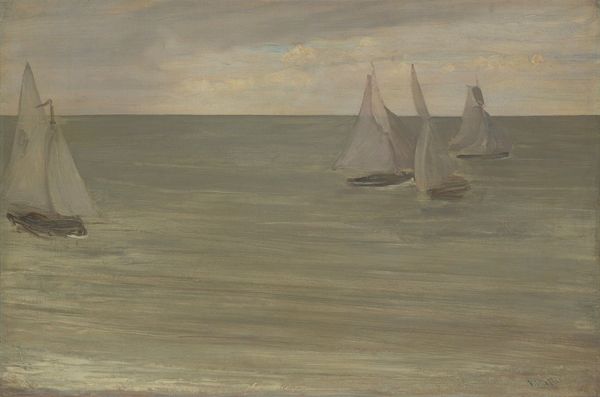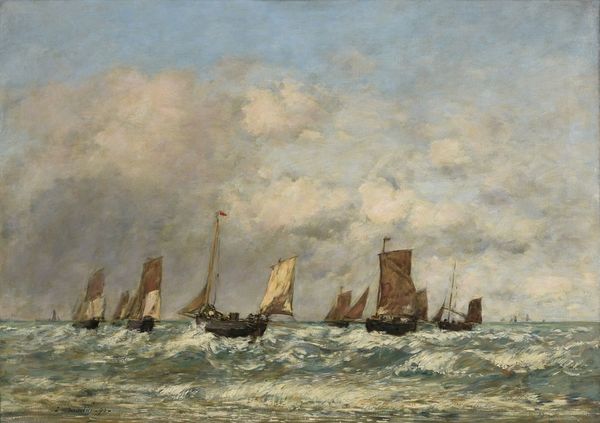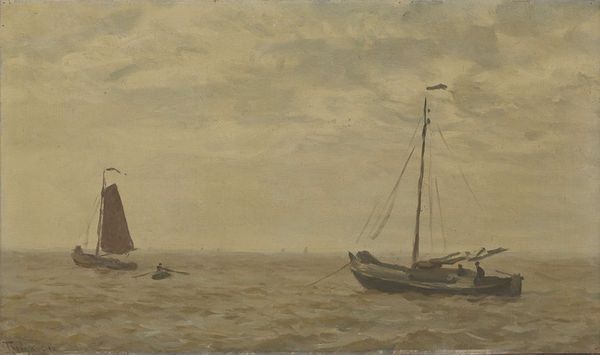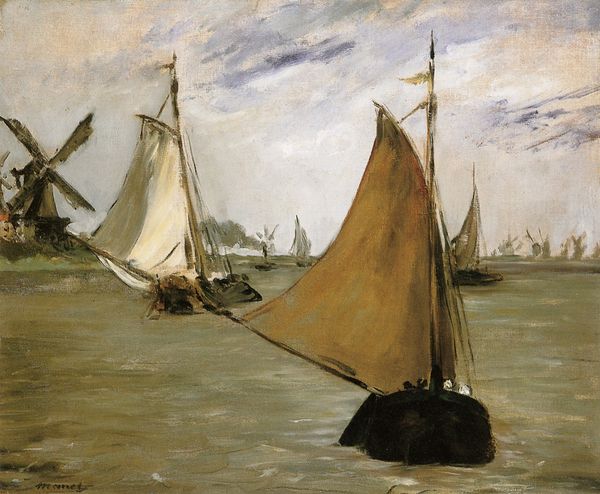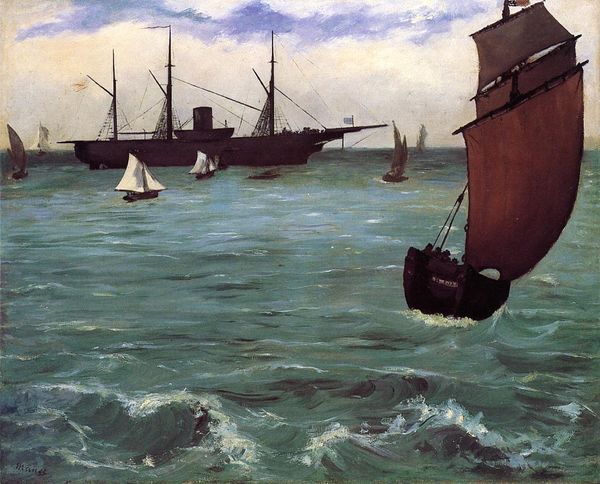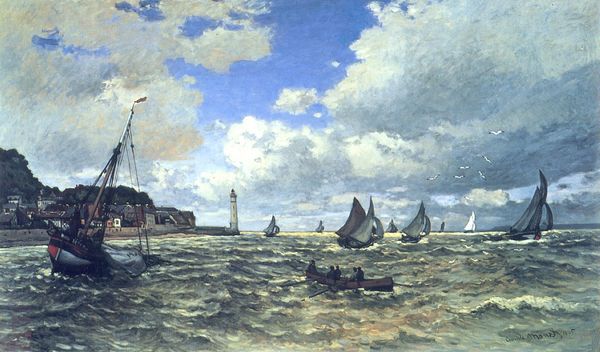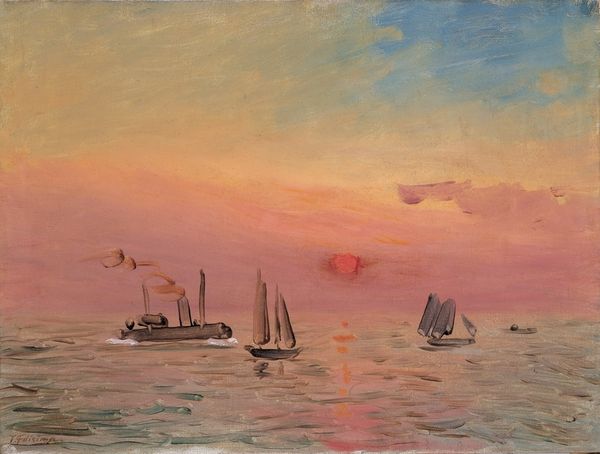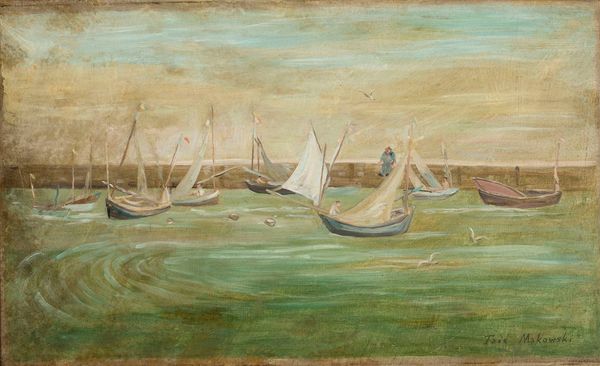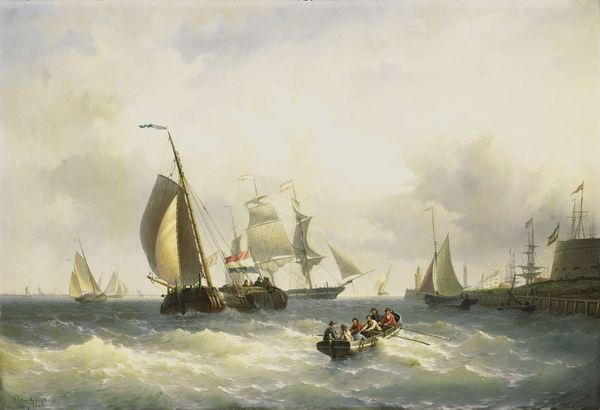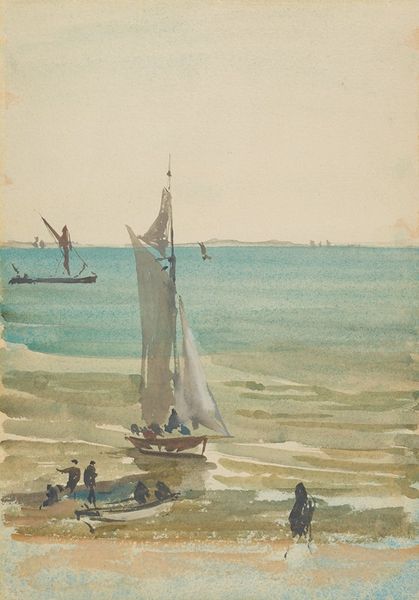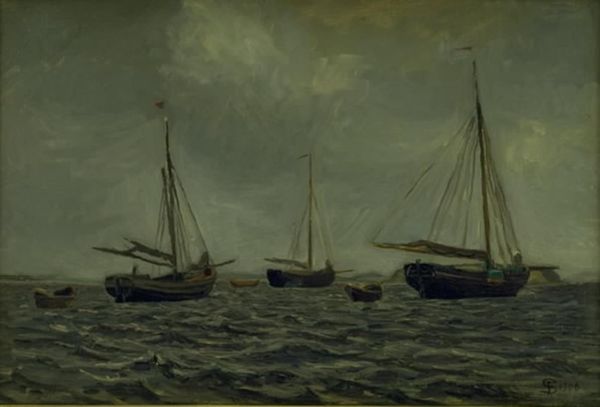
painting, oil-paint
#
boat
#
ship
#
painting
#
impressionism
#
oil-paint
#
vehicle
#
landscape
#
oil painting
#
ocean
#
cityscape
#
sea
Dimensions: 74 x 93 cm
Copyright: Public domain
Curator: This is Édouard Manet's "Steamboat Leaving Boulogne," painted in 1864, part of our museum's permanent collection. Editor: Immediately, I'm struck by how the grays and blues dominate the palette; the scene evokes a quiet, almost melancholy atmosphere. The thickness of the brushstrokes makes the ocean seem alive and moving. Curator: Absolutely, the painting serves as a symbolic transition point for Manet, marking his movement towards Impressionism. The steamboat, contrasted with the traditional sailboats, hints at the rapidly changing industrial landscape. What stories does it bring up for you? Editor: Steam signifies progress, but the black smoke also represents industry's impact. Here we have boats alongside each other, the smoke dwarfing all of the white sails on the boats in the image, one might almost forget of the boats themselves.. It almost feels like an elegy for a passing era. And seeing it rendered in oil paints— a medium so rooted in tradition — really highlights the tension. Curator: It’s a potent point. The plumes of smoke can symbolize the fleeting nature of existence, the temporary quality of modernity, always present at Manet's paintings which often allude to Paris transformation at that period. Look at the almost ghostly rendering of the vessels. The sea itself carries symbolic weight as a boundary, the edge of possibilities. Editor: Right, and look at the surface itself. Manet’s bold brushwork challenges academic painting, emphasizing the materiality of the paint itself. One really senses the artist wrestling with tradition. What would an ordinary citizen or sailor have to say looking at these majestic displays of vessels from sail to coal power in their time. The painting highlights progress, its material cost, but its human potential. Curator: Precisely! This image serves as a complex blend of modern reality with more deeply ingrained symbols from France's past, questioning ideas of time. Thank you. Editor: Yes, the juxtaposition makes for such a thought-provoking engagement with the cultural shifts happening then— and perhaps even now.
Comments
No comments
Be the first to comment and join the conversation on the ultimate creative platform.


